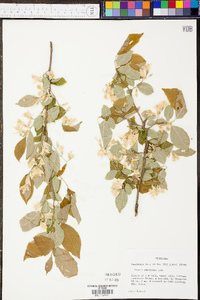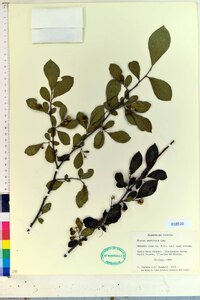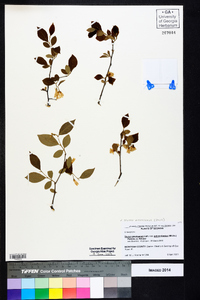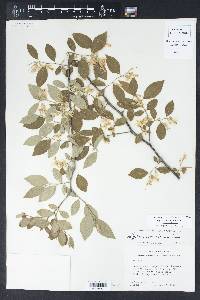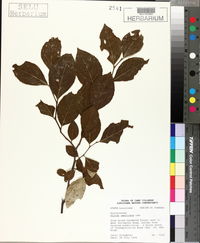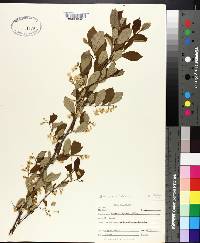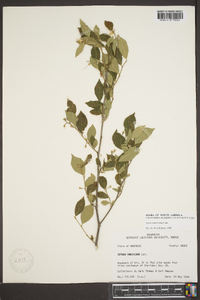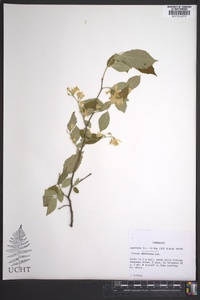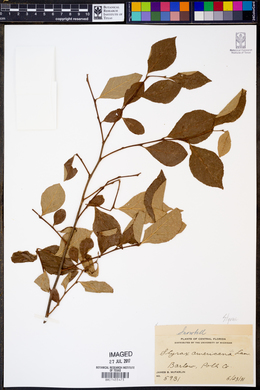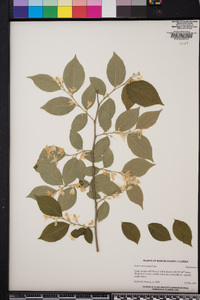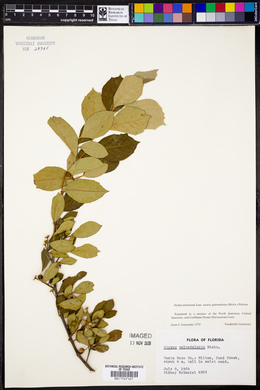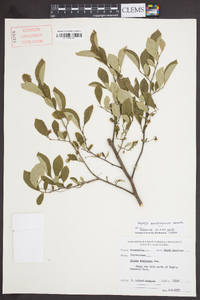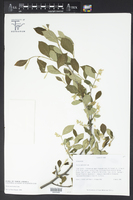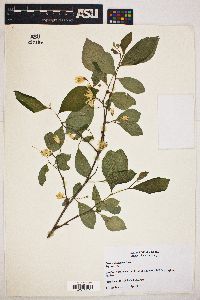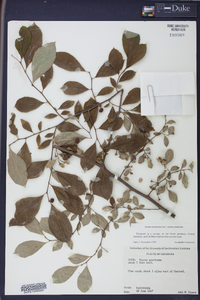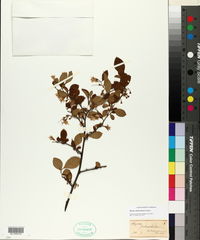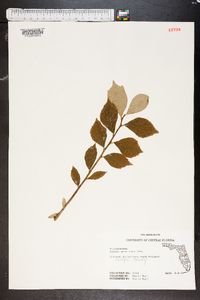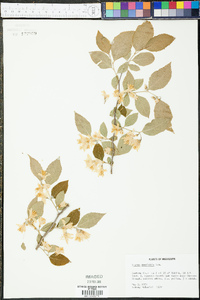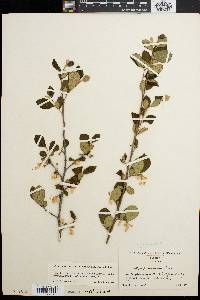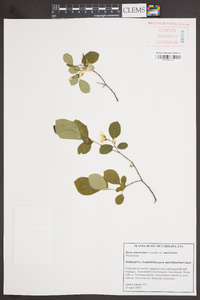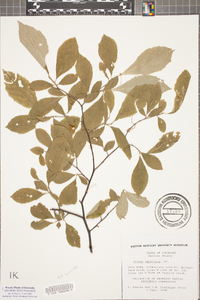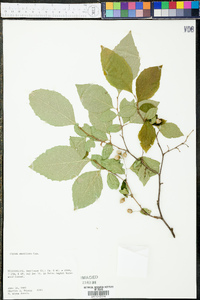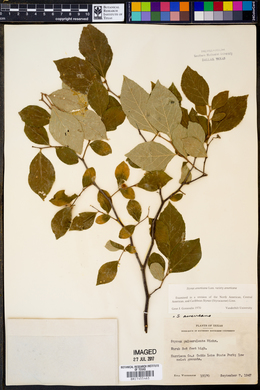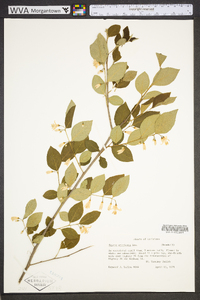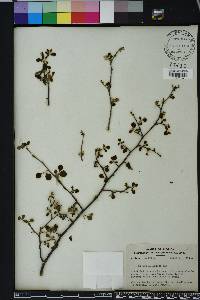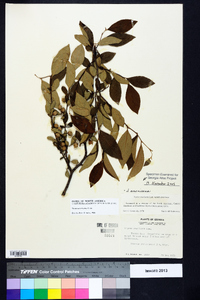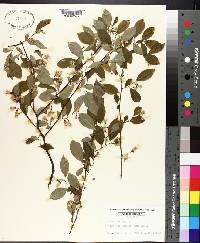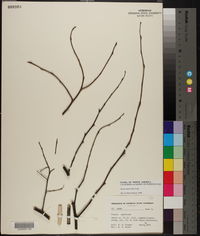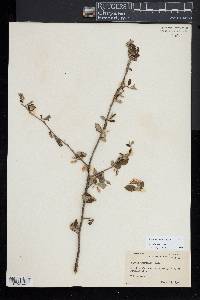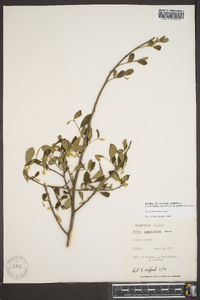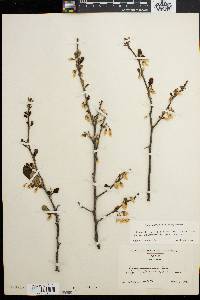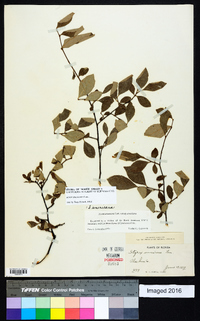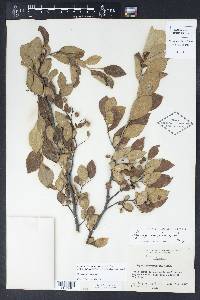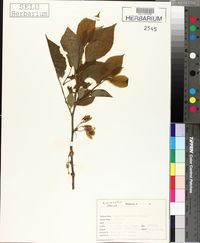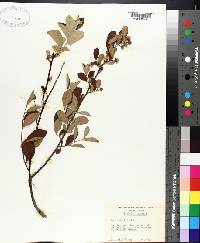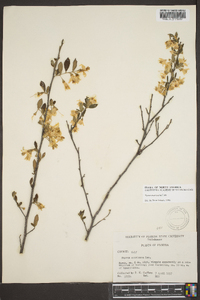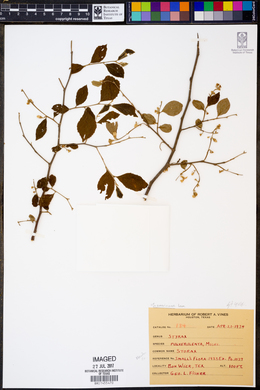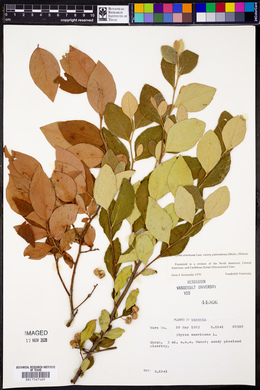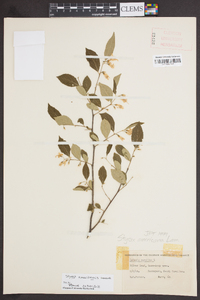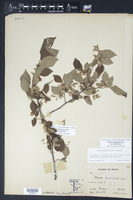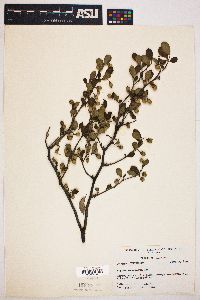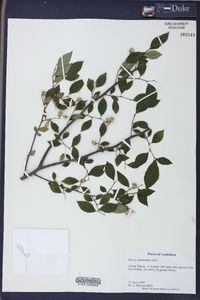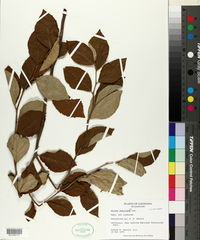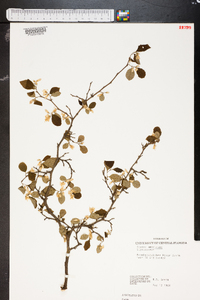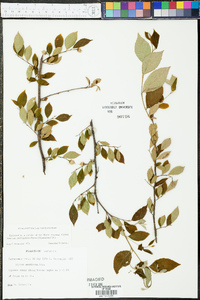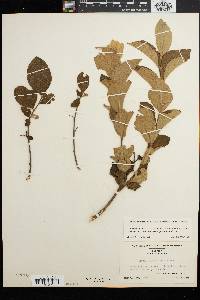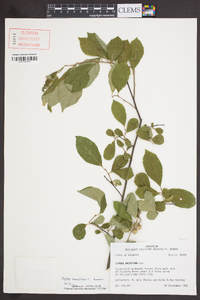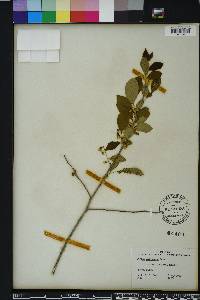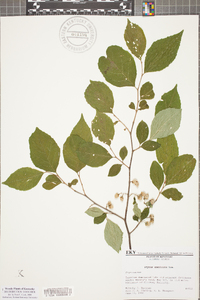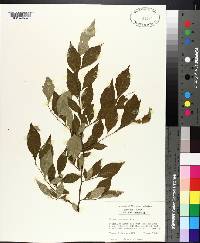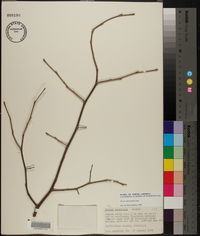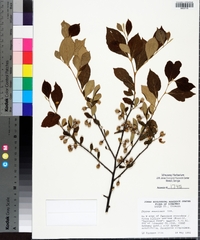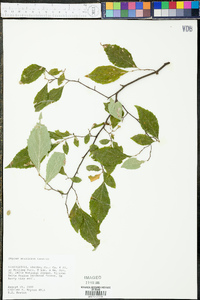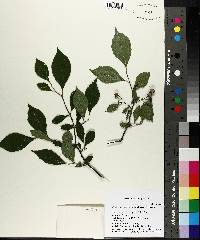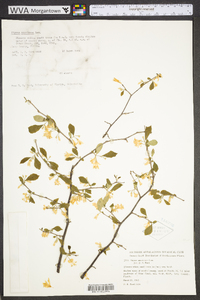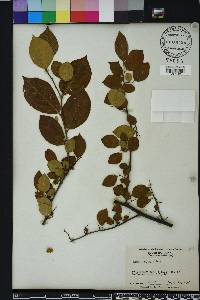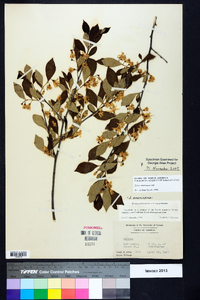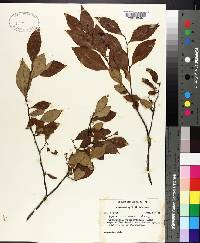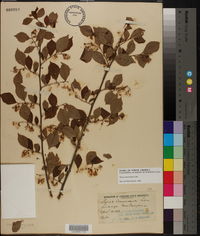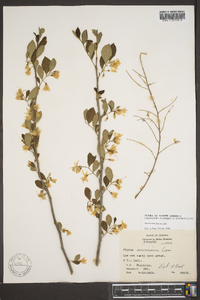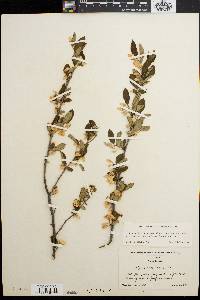Styrax americanus
|
|
|
|
Family: Styracaceae
American Snowbell
[Styrax americana Lam.] |
Shrubs or trees, to 5 m, not suckering from roots. Leaves: petiole 2-6 mm; blade with 5-8 secondary veins, elliptic or broadly elliptic to obovate or nearly ovate, 1.2-10 × 0.6-5.7 cm, largest blades on sterile shoots 2-5.7 cm wide, margins of at least some leaves denticulate to serrate, rarely also lobed, longest arms of abaxial hairs 0.1-0.2 mm. False-terminal inflorescences 2-5-flowered or solitary flower, 2-3.5 cm; axillary flowers present on at least some shoots (subtending leaves often reduced). Pedicels 4-10(-14) mm, longer than calyx. Flowers: calyx 2.5-4 × 2.5-4.5 mm; corolla 11-16 mm, tube 1.5-3 mm, lobes 5(-6), imbricate or subinduplicate-valvate in bud, strongly reflexed, elliptic to narrowly elliptic, 7-14 × 1-5 mm; filaments distinct beyond adnation to corolla. Capsules globose, 7-9 × 7-9 mm (broader when 2-3-seeded), gray stellate-pubescent, dehiscent nearly or completely to proximal end, broadly exposing seed(s); fruit wall 0.3-0.4 mm thick. 2n = 16. Flowering Mar-Jun; fruiting Jun-Oct. Wooded floodplains, swamps, boggy slopes, hammocks, usually in sandy or peaty soils; 0-300 m; Ala., Ark., Fla., Ga., Ill., Ind., Ky., La., Miss., Mo., N.C., Ohio, Okla., S.C., Tenn., Tex., Va. Styrax grandifolius is partly sympatric with S. americanus, and molecular data indicate that it is a close relative (P. W. Fritsch 2001). The two species are separated ecologically, with S. americanus occupying lower, moister sites (G. J. Gonsoulin 1974). Hybridization between the two is not apparent. Some authors have recognized plants with more densely pubescent new shoots, leaves, and inflorescences and shorter pedicels as a distinct taxon, at either the specific or infraspecific level (J. K. Small 1933; A. J. Rehder 1940; G. J. Gonsoulin 1974). The most densely pubescent plants occur in the southernmost portion of the range of the species; intermediates between the two extremes are abundant. The character differences that separate the taxa are here considered taxonomically inconsequential.
Shrub 1.8 - 4 m tall Leaves: alternate, stalked, bright green above, paler beneath, 3 - 10 cm long, 1.3 - 3.2 cm wide, narrowly elliptic to oblong with a pointed tip and a wedge-shaped base, non-toothed or finely toothed on upper half, hairless or lightly hairy on lower surface. Flowers: borne terminally in a semi-drooping inflorescence (raceme) of two to four flowers or hanging solitary or paired in leaf axils, white, with ten stamens. The petals are fused into a bell shape with five reflexed lobes 10 - 12 mm long. Fruit: dry and leathery with a center stone (drupe), 6 - 8 mm across, nearly spherical to inversely egg-shaped, covered with short grayish hairs. Twigs: slender, zigzag, light brown, becoming somewhat stringy with age. Buds: 1.5 - 4 mm long, lacking scales (naked). A smaller accessory bud is located above the true lateral bud. Similar species: The flowers and fruit of Styrax americanus make it easy to distinguish from any other species in the Chicago Region. Flowering: June Habitat and ecology: Local in moist areas such as swampy woods, along rivers, or woodlands along annually flooding streams. Occurence in the Chicago region: native Etymology: Styrax is the classical Greek name for plants in this genus. Americanus means "from the Americas." Author: The Morton Arboretum Branched shrub to 4 m; lvs narrowly elliptic, 3-10 cm, acuminate, usually serrulate distally, paler beneath but glabrous or nearly so; fls on short, lateral, leafy branches, a few solitary or paired in the axils and 2-4 in short, terminal, semi-drooping racemes; cal 3-4 mm; cor-lobes 10-12 mm, longer than the tube; fr subglobose or obovoid, 6-8 mm thick; 2n=16. Swamps and wet woods, chiefly on the coastal plain; se. Va. to Fla. and La., n. in the Miss. valley to s. Ind., and at scattered stations in s. Pa., Ky., s. O., and n. Ind. May, June. Our plants are var. americanus. A more hairy var. (pulverulentus) occurs southward. Gleason, Henry A. & Cronquist, Arthur J. 1991. Manual of vascular plants of northeastern United States and adjacent Canada. lxxv + 910 pp. ©The New York Botanical Garden. All rights reserved. Used by permission. From Flora of Indiana (1940) by Charles C. Deam Swampy woods and in woodland along streams that usually overflow annually. Local. Its distribution in Indiana offers an interesting problem. …… Indiana Coefficient of Conservatism: C = 8 Wetland Indicator Status: OBL |
|
|
|


